Game Changer at a Reasonable Price Point: Neotech NEI-3001-III Interconnects
Review by Jamie Gillies
Background
Over the last two years, I embarked on a series of upgrades to my system in the hopes of achieving a more ‘high-end’ sound from my mid-level priced gear, after being perfectly content with my laid back, if not particularly resolving, system.
My system consists of matching NAD C165BEE and C275BEE pre- and power amplifiers, a Thorens TD-145 Mk I turntable, an Oppo-105 universal transport and an exaSound e20 DAC and PlayPoint streamer. These are hooked up to my trusty Soliloquy 5.3 speakers. My speaker cables and RCA interconnects (up until now) were from Signal Cable, made by Long Island, NY cable guru Frank Dai.
My upgrades included first level changes like linear power supplies and power cables, courtesy of Canadian cablemaker Audio Sensibility. I also upgraded my power receptacle and replaced the outlet with a Furutech GTX-D Gold receptacle. These changes certainly transformed my system. It definitively lowered the noise floor, made the soundstage bigger and wider, and allowed better instrument separation. Instrumental jazz and classical music took on a new life in the system. But it also did something that did not make it ostensibly better. By pushing these components to their limits, it had the tendency to tip vocals towards sibilant, harsh and, in some cases, unlistenable particularly on badly recorded rock and pop music. In short, my upgrades produced a different sound but not an entirely satisfying experience.
The only part of the system I had not ‘upgraded’ were the interconnects and the speaker cable. In my experience, speaker cable has had the least impact on sound. And since my Signal Cable Ultra bi-wired speaker cable had been custom-made, I felt that upgrading this was not necessarily going to improve the sound much. That left the interconnects.
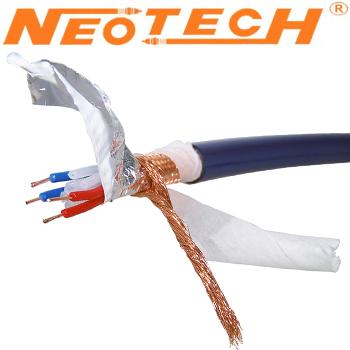 Enter Peter Scharman of PSE Audio Products, the Canadian distributor of Neotech cables, Nagaoka cartridges, and other products. Our editor provided introductions, and Peter called me to talk about Neotech’s cable technology, the history of the company, how he became involved in Canadian distribution, and what might work for a review. Neotech is the name brand of the cable manufacturer from Taiwan that supplies many of the cables for other well-known audiophile brands (Neotech is one of only 3 wire producers licensed to make OCC). We settled on the balanced design Neotech NEI-3001 III RCA interconnects, which are their top-of-the-line in the NEI-3xxx copper range. This is an Ohno Continuous Casting (OCC) Copper round conductor interconnect, with silver plating on about 15% of the copper strands. Retail is about $400 Canadian for a one-metre cable, factory-terminated with fairly beefy RCA connectors. Peter felt the NEI-3001 was ‘just right,’ and that I was likely to see an improvement in my system.
Enter Peter Scharman of PSE Audio Products, the Canadian distributor of Neotech cables, Nagaoka cartridges, and other products. Our editor provided introductions, and Peter called me to talk about Neotech’s cable technology, the history of the company, how he became involved in Canadian distribution, and what might work for a review. Neotech is the name brand of the cable manufacturer from Taiwan that supplies many of the cables for other well-known audiophile brands (Neotech is one of only 3 wire producers licensed to make OCC). We settled on the balanced design Neotech NEI-3001 III RCA interconnects, which are their top-of-the-line in the NEI-3xxx copper range. This is an Ohno Continuous Casting (OCC) Copper round conductor interconnect, with silver plating on about 15% of the copper strands. Retail is about $400 Canadian for a one-metre cable, factory-terminated with fairly beefy RCA connectors. Peter felt the NEI-3001 was ‘just right,’ and that I was likely to see an improvement in my system.
Cable Arrival and Break-In
 The Neotech NEI-3001’s arrived in lovely boxes, wrapped carefully with certificates of authenticity and mesh coverings for the Neotech DG-201 cryo-treated RCA connectors with gold-plated contacts. The build quality was fantastic, a thick blue jacket covers UP-OCC ultra-pure copper and SP-OCC silver plated copper conductor material. According to Neotech, the cable design minimizes the capacitance between conductors to achieve more accuracy in sound and maximize performance. The cable sections are individually insulated with polyethylene and positioned around an air-insulated polyethylene tubing. An aluminum-mylar film and OCC copper shield are used as an external screen. The result is that Neotech should have low capacitance and inductance.
The Neotech NEI-3001’s arrived in lovely boxes, wrapped carefully with certificates of authenticity and mesh coverings for the Neotech DG-201 cryo-treated RCA connectors with gold-plated contacts. The build quality was fantastic, a thick blue jacket covers UP-OCC ultra-pure copper and SP-OCC silver plated copper conductor material. According to Neotech, the cable design minimizes the capacitance between conductors to achieve more accuracy in sound and maximize performance. The cable sections are individually insulated with polyethylene and positioned around an air-insulated polyethylene tubing. An aluminum-mylar film and OCC copper shield are used as an external screen. The result is that Neotech should have low capacitance and inductance.
For my system, I wanted an interconnect that provides more clarity, detail and resolution, especially on vocals. I swapped out my Signal Analog One interconnects, connected the Neotech cables and began the break-in period for about four or five days, streaming high resolution files on repeat. Peter had also put them on his cable burner for a couple of days before they arrived.

During the first day of burn in, after a couple hours, eager to hear how they sounded, I listened to a couple of my test tracks and my initial takeaway was that these cables were a little zingy, where the sound seemed to jump out from the speakers. I emailed Peter and he responded that in his experience “OCC and especially cryogenically treated OCC settle down quicker than OFC, and that 40 hours often seems to be the minimum time and then it becomes more stable in sound.” I ran it again through the night and then listened the next day. It sounded good to start, then got really boomy and bass-heavy. I took Peter at his word and decided to hold off on critical listening and let it run on low volume for a few days. Some people claim that there is no such thing as ‘break-in’ but in my experience, speakers, outlets, cables and equipment all need time to settle in.
Critical Listening
I started with my NAD preamp plugged in. I always start with my first test track, an audiophile and hi-fi staple, Your Latest Trick, Dire Straits’ fourth song off of Brothers In Arms (DSD from MFSL SACD).
 The thing I noticed is that my system seemed to have relaxed a bit. By its nature, the soundstage sits about a foot behind my speakers and this creates a deep but recessed sound. Immediately, I found that Mark Knopfler’s vocals had more presence and were a little more forward. But, at the same time, they were more effortless and relaxed. I probably know this track more than any other and I could tell something had happened to the sound. It felt more balanced as if I was not listening to a laid back speaker, but listening to Dire Straits. I played this track on repeat with my eyes closed just to get a baseline for changes to the sound. One caveat: Your Latest Trick, particularly the Shawn Britton mastered MFSL SACD or the Bob Ludwig 20th Anniversary SACD, tends to sound great in any system. But there was certainly something more natural sounding after repeated listenings.
The thing I noticed is that my system seemed to have relaxed a bit. By its nature, the soundstage sits about a foot behind my speakers and this creates a deep but recessed sound. Immediately, I found that Mark Knopfler’s vocals had more presence and were a little more forward. But, at the same time, they were more effortless and relaxed. I probably know this track more than any other and I could tell something had happened to the sound. It felt more balanced as if I was not listening to a laid back speaker, but listening to Dire Straits. I played this track on repeat with my eyes closed just to get a baseline for changes to the sound. One caveat: Your Latest Trick, particularly the Shawn Britton mastered MFSL SACD or the Bob Ludwig 20th Anniversary SACD, tends to sound great in any system. But there was certainly something more natural sounding after repeated listenings.
\
 On an SACD kick lately, I tried the 2022 MFSL SACD of Paul Simon’s Still Crazy After These Years. I played the whole album, and it was the best I had ever heard it. Even the track Have A Good Time, which I have found to be a little too close mic’d on Simon’s vocals and which can sound sibilant and too strident in my system, sounded good. This time, it had, dare I say it, ‘calmed down’ and was smoother. Maybe that is what I thought was the cable’s zingyness. In fact, it just seemed to move vocals closer to the listener position.
On an SACD kick lately, I tried the 2022 MFSL SACD of Paul Simon’s Still Crazy After These Years. I played the whole album, and it was the best I had ever heard it. Even the track Have A Good Time, which I have found to be a little too close mic’d on Simon’s vocals and which can sound sibilant and too strident in my system, sounded good. This time, it had, dare I say it, ‘calmed down’ and was smoother. Maybe that is what I thought was the cable’s zingyness. In fact, it just seemed to move vocals closer to the listener position.
 I then turned to streaming some files. First up was Turnaround, the leadoff track from Joshua Redman’s sophomore album Wish (Warner Bros. 16/44 FLAC). This is one of those early nineties digital files that I have wanted to sound more analog, given the superb musicianship and sense of camaraderie and interplay between Redman, drummer Billy Higgins, guitarist Pat Metheny and Charlie Haden on bass. With the Neotechs in place, Haden’s bass is front and center, almost holographic as he takes over the groove. I was floored that a redbook track from the nineties could sound this good.
I then turned to streaming some files. First up was Turnaround, the leadoff track from Joshua Redman’s sophomore album Wish (Warner Bros. 16/44 FLAC). This is one of those early nineties digital files that I have wanted to sound more analog, given the superb musicianship and sense of camaraderie and interplay between Redman, drummer Billy Higgins, guitarist Pat Metheny and Charlie Haden on bass. With the Neotechs in place, Haden’s bass is front and center, almost holographic as he takes over the groove. I was floored that a redbook track from the nineties could sound this good.

 Next I tried some more modern music from my go-to audiophile playlist. First up, a Ray Lamontagne track from his album Supernova (RCA 16/44 FLAC). Airwaves is such a fantastic song and it features Brian Lucey’s organic punchy mastering. Then I tried Death Cab For Cutie’s ethereal You’ve Haunted Me All My Life from their album Kintsugi (Atlantic HDtracks 24/96). Both tracks seemed to take on a more defined presence. Both Lamontagne and Death Cab’s Ben Gibbard sounded like they were in the room.
Next I tried some more modern music from my go-to audiophile playlist. First up, a Ray Lamontagne track from his album Supernova (RCA 16/44 FLAC). Airwaves is such a fantastic song and it features Brian Lucey’s organic punchy mastering. Then I tried Death Cab For Cutie’s ethereal You’ve Haunted Me All My Life from their album Kintsugi (Atlantic HDtracks 24/96). Both tracks seemed to take on a more defined presence. Both Lamontagne and Death Cab’s Ben Gibbard sounded like they were in the room.
 I then listened to Haim’s Something To Tell You on Tidal. Here again, I was hearing things I had not heard before in the different layers of this magnificent modern production. Where I noticed the most positive effect was with streaming from Tidal. My streamer is pre-MQA, so I listen to HiFi as well as some 24/44 or 24/48 streams, but I don’t have the MQA unfold. I also don’t have my streamer hardwired with an ethernet cable. It’s just streaming over Wifi. For the first time, I noticed that streaming tracks sounded as good as some CDs. I had always found streaming over Wifi to be a little thin and mp3-like, as if I was listening to a radio station. With the Neotechs, I finally heard a streaming service like Tidal sound closer to the physical CD format, or a lossless rip or high resolution download.
I then listened to Haim’s Something To Tell You on Tidal. Here again, I was hearing things I had not heard before in the different layers of this magnificent modern production. Where I noticed the most positive effect was with streaming from Tidal. My streamer is pre-MQA, so I listen to HiFi as well as some 24/44 or 24/48 streams, but I don’t have the MQA unfold. I also don’t have my streamer hardwired with an ethernet cable. It’s just streaming over Wifi. For the first time, I noticed that streaming tracks sounded as good as some CDs. I had always found streaming over Wifi to be a little thin and mp3-like, as if I was listening to a radio station. With the Neotechs, I finally heard a streaming service like Tidal sound closer to the physical CD format, or a lossless rip or high resolution download.
The cumulative effect was that music sounded more open and there was certainly more clarity on the vocals, like a layer had been lifted off. But they had also certainly pushed the overall soundstage forward. This is not too surprising given that the Signal Cable Analog One RCAs had a reputation of being laid back themselves.
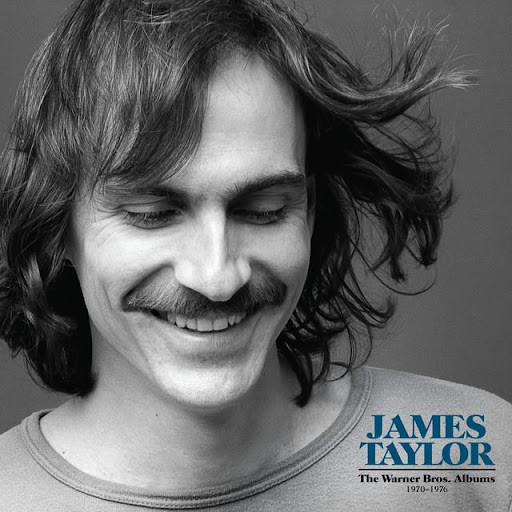 The Neotechs could not rectify some of my more problematic recordings. The newest remaster of James Taylor’s Sweet Baby James is a particularly bad sounding album. The Bernie Grundman remaster from the Warner Bros. “Years” box (Warner Bros. HDtracks 24/192) loses the natural vocals from the original vinyl. It still sounded grainy and unnatural with the Neotechs.
The Neotechs could not rectify some of my more problematic recordings. The newest remaster of James Taylor’s Sweet Baby James is a particularly bad sounding album. The Bernie Grundman remaster from the Warner Bros. “Years” box (Warner Bros. HDtracks 24/192) loses the natural vocals from the original vinyl. It still sounded grainy and unnatural with the Neotechs.
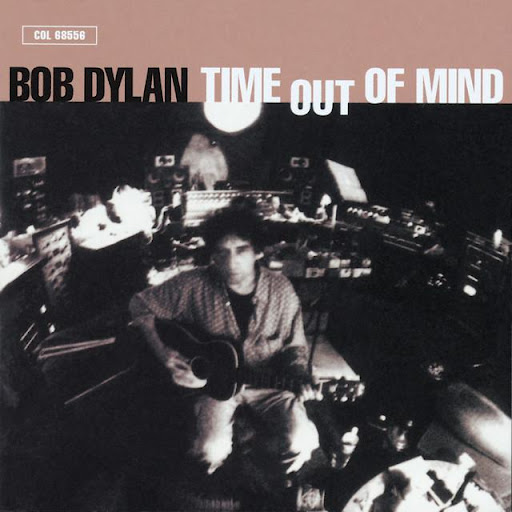 It did improve the sound of Bob Dylan’s Not Dark Yet, from his superb Time Out Of Mind (Columbia HDtracks 24/44). The start of the track contains some real sibilant and harsh vocals from Dylan and then it settles down. It was smoothed out slightly but not enough for it to go unnoticed. I then tried the singer I have had the most difficulty with in terms getting what I think is an accurate facsimile of his voice: Peter Gabriel. I tried Don’t Give Up, his duet with Kate Bush, from So (Geffen SACD DSD). The sibilant peaks were softened and I got what I assume is more what was intended by Gabriel and Daniel Lanois.
It did improve the sound of Bob Dylan’s Not Dark Yet, from his superb Time Out Of Mind (Columbia HDtracks 24/44). The start of the track contains some real sibilant and harsh vocals from Dylan and then it settles down. It was smoothed out slightly but not enough for it to go unnoticed. I then tried the singer I have had the most difficulty with in terms getting what I think is an accurate facsimile of his voice: Peter Gabriel. I tried Don’t Give Up, his duet with Kate Bush, from So (Geffen SACD DSD). The sibilant peaks were softened and I got what I assume is more what was intended by Gabriel and Daniel Lanois.
 I have to be careful because when I listen to tracks like this, where I think there are some recording flaws or I am listening to a particular aspect of the track from an audio standpoint, I end up proving Alan Parsons’ oft-quoted statement that “audiophiles don’t use their equipment to listen to music. Audiophiles use your music to listen to their equipment.” Still, I couldn’t help but feeling that I was playing an extended game of whack-a-mole because my impression was that the weaker point was now the speaker cables and sound from the speakers. Even through the headphone jack of my preamp, I found the sound to be balanced and superb. Now the speakers were letting me down a bit.
I have to be careful because when I listen to tracks like this, where I think there are some recording flaws or I am listening to a particular aspect of the track from an audio standpoint, I end up proving Alan Parsons’ oft-quoted statement that “audiophiles don’t use their equipment to listen to music. Audiophiles use your music to listen to their equipment.” Still, I couldn’t help but feeling that I was playing an extended game of whack-a-mole because my impression was that the weaker point was now the speaker cables and sound from the speakers. Even through the headphone jack of my preamp, I found the sound to be balanced and superb. Now the speakers were letting me down a bit.
Final Verdict
I emailed Peter Scharman during the review process and asked him to send me another interconnect and to inquire about both digital and speaker cables. The Neotech NEI-3001 III, at least for my system, hit the sweet spot for digital playback. I purchased these interconnects.
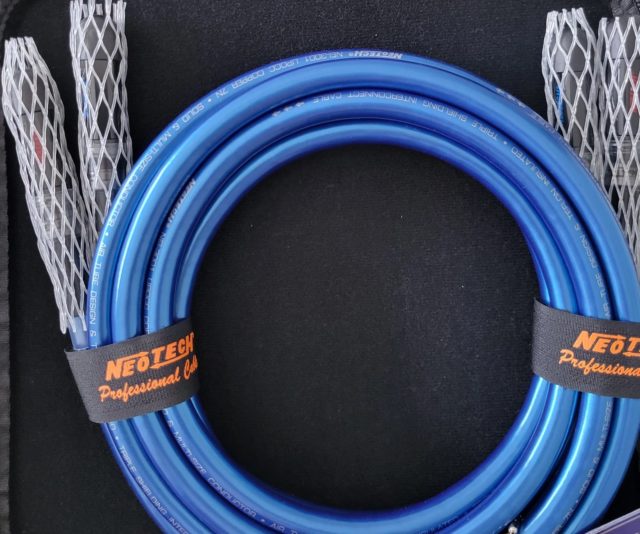
Having tried silver cables, Audioquest DBS cables, tested and heard Nordost and Cardas cables in a variety of systems, as well as my old standby entry level Signal Cables, I never found something that consistently brought me closer to the music. DIY cables can be made that change the sound but they never seem to do everything well. Lower end name brand cables seem to underwhelm after hearing higher end and very expensive lines of the same brand. Neotech’s NEI-3001 III is their best of their copper ranges of interconnect. It does everything well. It does not tend to be showy like silver interconnects. And it is better than my copper cables, though Signal Cable does make a great multipurpose RCA that I have enjoyed for years. The Neotech design seems to give me everything I want, especially that clarity and resolution I have been craving. One word of caution: in my experience, getting a ‘full loom’ of cables is often necessary to upgrade the sound. You can try to swap and use different ones but I have never had much luck with that.
When you go down the upgrade path with mid-level gear, synergy becomes important because there will likely be limitations and shortcomings in your system. Tip things one way or another and, as Peter says, “it’s hard to know where the ‘sins’ of the system are coming from, especially if a new component reveals the negative traits of associated components.” In other words, there is only so much you can do sometimes with certain gear. But for someone like me, who has not yet made the leap to the more expensive luxury speakers and associated gear, the Neotech NEI-3001 III RCA interconnect gives me another missing ingredient in a system that I felt could achieve a lot more. A highly recommended cable.
I also want to thank Peter Scharman for all of his help and advice. Peter has distributed Neotech for years, and has a good network of dealers in Canada.
~~~~~~~~
Note: As of Sept 2022, Canadian Neotech distribution has been transitioned to Steven Huang, under his new company Cryoclear.
Specifications
• Construction: two conductors solid OCC copper and two conductors stranded OCC copper with silver plating
• Cross-section of conductors: 4×0.59 mm²
• Conductor material: UP-OCC ultra-pure copper and SP-OCC silver plated copper
• Shielding: aluminum-mylar foil and copper braid UP-OFC
• Insulation material: PE polyethylene, Teflon tape, air insulated polyethylene tube
• Outer sheath: PVC
• Resistance: 0.031 Ohm / m
• Capacitance: +/- 65 pF / m
• Inductance: 0.341 μH / m
• Connectors RCA: Neotech DG-201 Cryo-treated with gold plated contacts
• Outside diameter: 10.5 mm
• Cable colour: blue
• Length: 1.0 m (3.28 ft)
Retail price: $410 CAD (1-meter RCA pair), $440 CAD (1-meter XLR pair). Also available in shorter and longer lengths.
Web page: https://wp.neotechcable.com/ic-up-occ-copper-cable/
Disclosure: Wall Of Sound Editor Noam Bronstein is also a Neotech dealer.

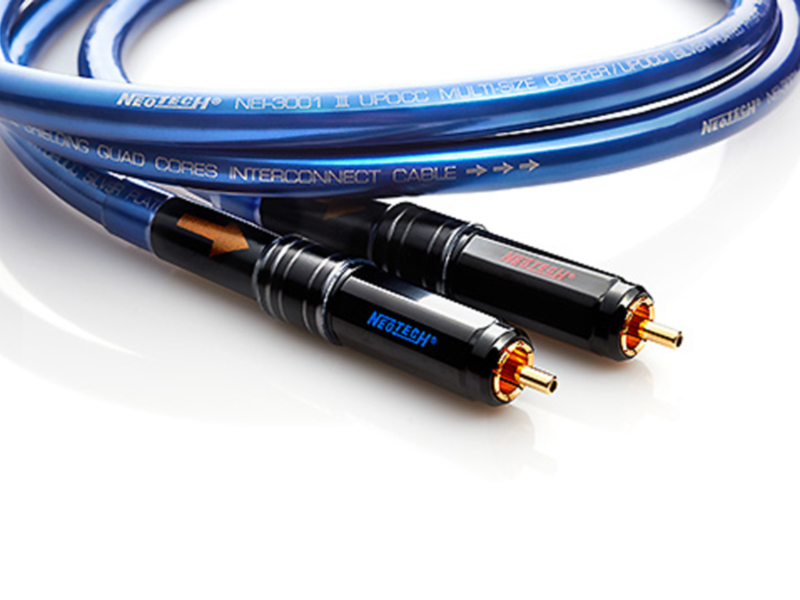
I almost purchased a pair of Neotech’s a couple of years ago after seeing them at a show, but not being familiar with them at the time, I declined. Jamie’s review may entice me to have a look at these again. Great review Jamie!
there is something even better now it’s rectangular OCC single crystal wire that’s the top of the heap at Neotech, the silver rectangular OCC is called the Amazon and the copper rectangular OCC is called the Sahara both are game changers that will go up against the real expensive stuff not cheap but wow what a difference compared to round OCC night and day.
Based on your review I don’t even need to worry about my speakers or DAC! Just buy anything and these bad boys will take care of all the sound quality. Unheard of but I believe you! Where do I sign up? They serve free Kool-Aid with each purchase?
The vocal sound on Dylan’s Time Out of Mind was a conscious and hard achieved sound in Bob and Daniel Lanois’ effort to imitate an old vinyl 50s kind of vibe. Multiple mics and a pass through a 4 track cassette deck…I love the sound, you can learn about it from Dan’s book “Soul Mining” and Mark Howard’s (Dan’s engineer, on many great records) “Listen Up.” Sorry you rig makes it sound harsh, I’ve never experienced that, but then again, I’m more conversant in Lanois and Dylan’s recording methods and production. I don’t favor music that’s well recorded because it sounds good on my rig, I’m here for the music. It’s why I have different ears; I’m a musician and recording artist and things that bother “audiophiles” ecchhh…. don’t trouble me. Also, Wall of Sound was the name of Grateful Dead’s legendary and revolutionary sound system. Are you a Deadhead? Best wishes.
Oh my… Sofa King, LOL, I never implied what you suggest. I apologize for my difficult to understand perspective and hopes for a conversation. Should know better visiting a site that stole the name of the greatest sound system ever… for a “hi fi review” blog. Old people like blogs, I think. Right? Kinda like business Facebook and AOL.